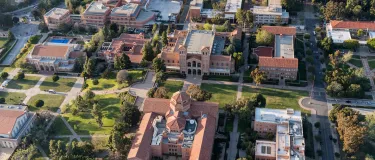Summary
Summary: In order to plan for the Multipurpose Senior Services Program (MSSP) and Community Based Adult Services (CBAS) at the state and local levels, the California Department of Aging (CDA) contracted with the UCLA Center for Health Policy Research to identify the number of potential eligible individuals likely to use these programs.
The UCLA team first identified the program data sources needed to describe the number and demographic characteristics of MSSP and CBAS actual users in California in 2019–2020. Using data from the California Health Interview Survey (CHIS) and Medi-Cal data provided by the Department of Health Care Services (DHCS), the team then developed statistical models that were used internally, to estimate the number and demographic characteristics of Californians who were potentially eligible for MSSP and/or CBAS services and compare these estimates with the numbers and characteristics of those who actually used these services in 2019–2020.
Finally, the UCLA team used the California Department of Finance (DOF) population projections to generate estimates of 5-, 10-, and 30-year levels of MSSP and CBAS need in California. These 5-, 10-, and 30-year estimates (i.e., for 2025, 2030, 2050) include projections for the state, seven regions (i.e., Central Coast, Greater Bay Area, Los Angeles, Other Southern California, Northern/Sierra, Sacramento, San Joaquin Valley), and two counties (i.e., Orange and San Diego), which as the two most populated counties in California following Los Angeles, were selected to generate population projections of MSSP and CBAS need at the county level.
Findings: Results indicate that overall (i.e., statewide), and for both programs, there are many more individuals who are potentially eligible for CBAS and MSSP than are currently receiving these services. In addition, upon examination of available geographic data, there are some regional and local area differences between actual and potential users that are important to note. For example, while the Central Coast region is keeping pace with the same percentage of actual and estimated eligible CBAS users, the Los Angeles region is serving more than double the number who are estimated eligible. The remaining five regions (i.e., Greater Bay Area, Northern/Sierra, Other Southern California, Sacramento, and San Joaquin Valley) all have an estimated eligible CBAS user pool that is greater than the pool of actual CBAS users (with differences ranging from 3% to 17%).
The results also point to some notable differences in the demographic characteristics of actual program users when compared with those who are potentially eligible. For instance, a comparison of actual and estimated eligible users of CBAS suggests untapped opportunities to serve a younger population (i.e., 18–64 years of age), more English speakers, more Blacks, and more individuals who identify as biracial or multiracial. MSSP data, comparing actual and estimated eligible users, indicate a current deficit in service to the “younger-old” population (i.e., 65–74 years of age), individuals who identify English as their primary language, and Asians.
The California Department of Aging can use these findings to identify the number of actual and estimated eligible users of MSSP and CBAS, as well as the projected future number of potential MSSP and CBAS eligible individuals, throughout the state. This information, in combination with other data sources (e.g., information about provider supply) can be used to plan, promote, and target these services to the individuals who need them the most, and help prevent or delay more costly institutionalization.
Read the Publication:




